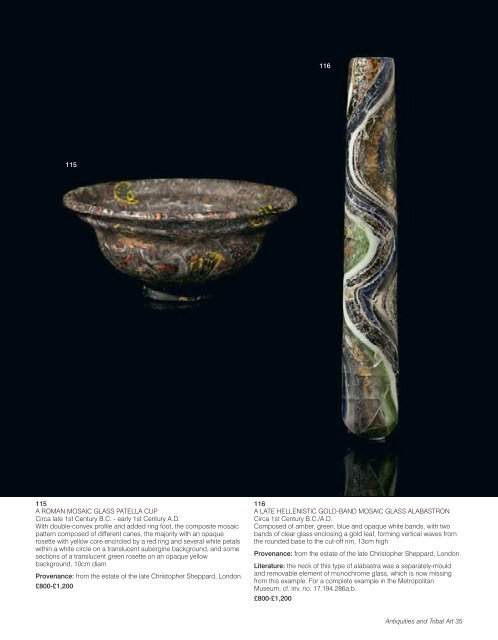Antiquities
Create successful ePaper yourself
Turn your PDF publications into a flip-book with our unique Google optimized e-Paper software.
116<br />
115<br />
115<br />
A ROMAN MOSAIC GLASS PATELLA CUP<br />
Circa late 1st Century B.C. - early 1st Century A.D.<br />
With double-convex profile and added ring foot, the composite mosaic<br />
pattern composed of different canes, the majority with an opaque<br />
rosette with yellow core encircled by a red ring and several white petals<br />
within a white circle on a translucent aubergine background, and some<br />
sections of a translucent green rosette on an opaque yellow<br />
background, 10cm diam<br />
Provenance: from the estate of the late Christopher Sheppard, London.<br />
£800-£1,200<br />
116<br />
A LATE HELLENISTIC GOLD-BAND MOSAIC GLASS ALABASTRON<br />
Circa 1st Century B.C./A.D.<br />
Composed of amber, green, blue and opaque white bands, with two<br />
bands of clear glass enclosing a gold leaf, forming vertical waves from<br />
the rounded base to the cut-off rim, 13cm high<br />
Provenance: from the estate of the late Christopher Sheppard, London.<br />
Literature: the neck of this type of alabastra was a separately-mould<br />
and removable element of monochrome glass, which is now missing<br />
from this example. For a complete example in the Metropolitan<br />
Museum, cf. inv. no. 17.194.286a,b.<br />
£800-£1,200<br />
<strong>Antiquities</strong> and Tribal Art 35


